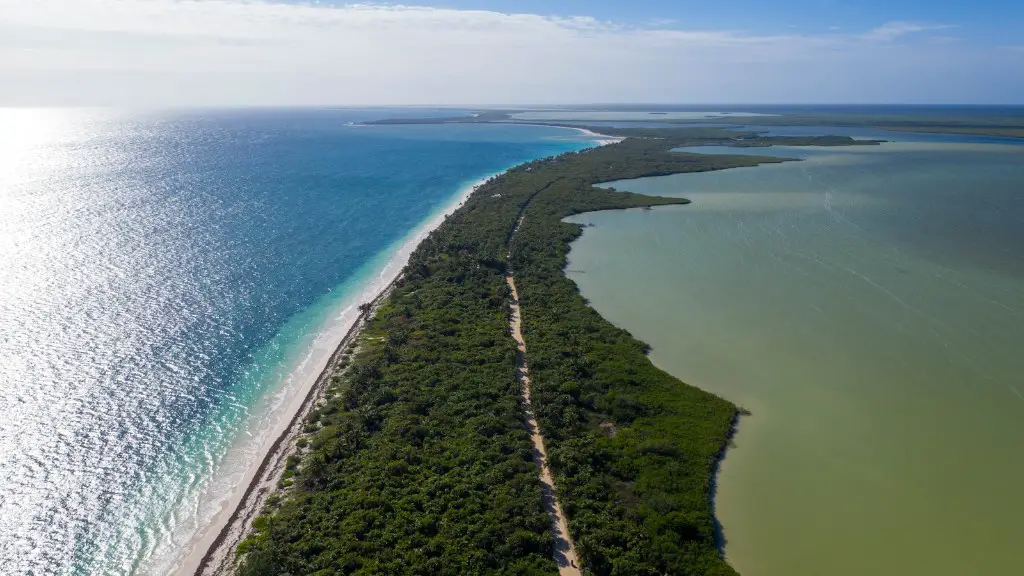Background Information
China has been involved in multiple territorial disputes in the South China Sea since the 1990s, including the Paracel Islands, Spratly Islands, Pratas Islands, Macclesfield Bank and Scarborough Shoal. These islands and shoals are highly sought after due to their proximity to shipping lanes and the potential of oil and gas deposits. China has sought to increase its presence by building military bases and constructing artificial islands. In 2016, an international tribunal at the Permanent Court of Arbitration (PCA) ruled against China, claiming they had violated international law by constructing and militarizing facilities in the South China Sea.
Relevant Data
China has increased its presence in the South China Sea over the past decade. In 2013, it proclaimed an Air Defence Identification Zone in an area covering the disputed Paracel and Spratly Islands, requiring all foreign aircrafts to identify themselves before proceeding. By 2018, China had reclaimed an estimated 3,200 hectares of land on various features in the region, including air and naval bases, storage facilities and runway extensions.
Moreover, China has also been involved in activities to solidify its presence, such as construction of man-made lighthouses, large aquaculture farms and energy exploration activities. From 2017 to 2019, China has reportedly deployed approximately 160 Chinese coast guard vessels in the South China Sea. This is on top of their larger naval presence, estimated to be around 49 ships.
Experts’ Perspectives
Analysts have long claimed that the long-term strategy of China is to control the South China Sea and to exercise power on the regional stage. Experts believe China is attempting to gain regional dominance in the area by creating a favourable environment that can benefit their businesses and military.
Experts have described China’s activities as “creeping incrementalism”. In this strategy, China would take small steps that are largely non-provocative and low cost to expand its presence in the South China Sea. Moreover, China has refused to comply with the permanent court ruling and claimed sovereignty in the region.
Analysis and Insights
China is undoubtedly increasing its presence in the South China Sea and despite opposition from the international community, has made clear that it has no intention of changing its stance on the region. This has been done in a calculated and precise manner, in order to gain maximum benefit.
The more China entrenches its presence, the more difficult it will be for neighbours to challenge its claims. This could have far-reaching implications in the event of a conflict, in terms of security and resources.
The approach of other countries in the region has been one of restraint, with none of the countries willing to directly confront China over its activities in the region. This further incentivizes China to further increase in its presence, as it believes it can operate with impunity in the South China Sea.
China’s presence in the South China Sea has had a major impact on navigation in the region. Vessels in the area must avoid running into Chinese warships and military drones that patrol the area. Countries in the region, especially those with claims in the area, have beefed up their naval presence in the region in order to deter increasing Chinese aggression.
These military vessels are a major safety risk to civilian vessels due to their heavy armaments. China has also sought to restrict access to certain places, such as Scarborough Shoal, by enforcing a 12-mile fishing exclusion zone in 2016. This has led to tensions between China and the Philippines and has caused an increase in friction between the two states.
Sanctions and Legal Measures
Despite its attempts to reinforce its presence, China still faces consequences from the international community. Multi-national organizations such as the United Nations and the European Union have imposed economic sanctions in response for China’s activities. In 2017, the United Nations Security Council called for de-escalation of tensions and for all parties to settle their disputes through peaceful means.
Additionally, China has faced legal challenges from other states claiming rights in the South China Sea, such as the 2016 Hague ruling, in which an international tribunal rejected almost all of China’s maritime claims in the area. Though this ruling had no enforcement penalties, it added a major blow to Chinese diplomatic efforts in the area.
Regional Perspectives and Responses
China’s presence and activity in the South China Sea have been met with varied responses from the region. China has long maintained a cordial relationship with many of its neighbours, such as Vietnam. In 2016, the two countries signed a historic pact which agreed to resolve disputes in the region through peaceful dialogue.
Contrastingly, China has frequently been met with resistance from countries such as the Philippines and Taiwan, who claim their own rights over the separate territories in the area. This has led to harsh criticism from these countries, as well as other states in the region.
International Responses
Additionally, countries outside the region have responded to China’s presence in the South China Sea in various ways. The United States is a major opponent to China’s South China Sea policy, and has frequently conducted “Freedom of Navigation” operations in the area in order to challenge China’s restrictive measures.
The United Kingdom, Australia, Japan and France have also expressed concerns over China’s actions in the region, calling for the peaceful resolution of disputes and respect for international law. Moreover, the international community, including organizations such as the United Nations and the International Maritime Organization, have voiced their opposition against China’s activities.
Economic Implications
The presence of Chinese activity in the South China Sea has caused concerns over the potential disruption of global trade in the area. China controls some of the most important shipping lanes in the world, including the Straits of Malacca and the South China Sea. This means that it has the power to influence the global trade flow and could impose tariffs or other restrictions on global trade.
Furthermore, China’s presence could severely disrupt and limit access to the trade routes of neighbouring states, such as Vietnam and the Philippines. This could result in losses of billions of dollars in revenue from reduced trade. Additionally, the presence of artificial islands and military facilities could also negatively affect the environment of the region due to waste and pollution.


